The #1 Strength Move That Keeps Your Metabolism Fast After 40
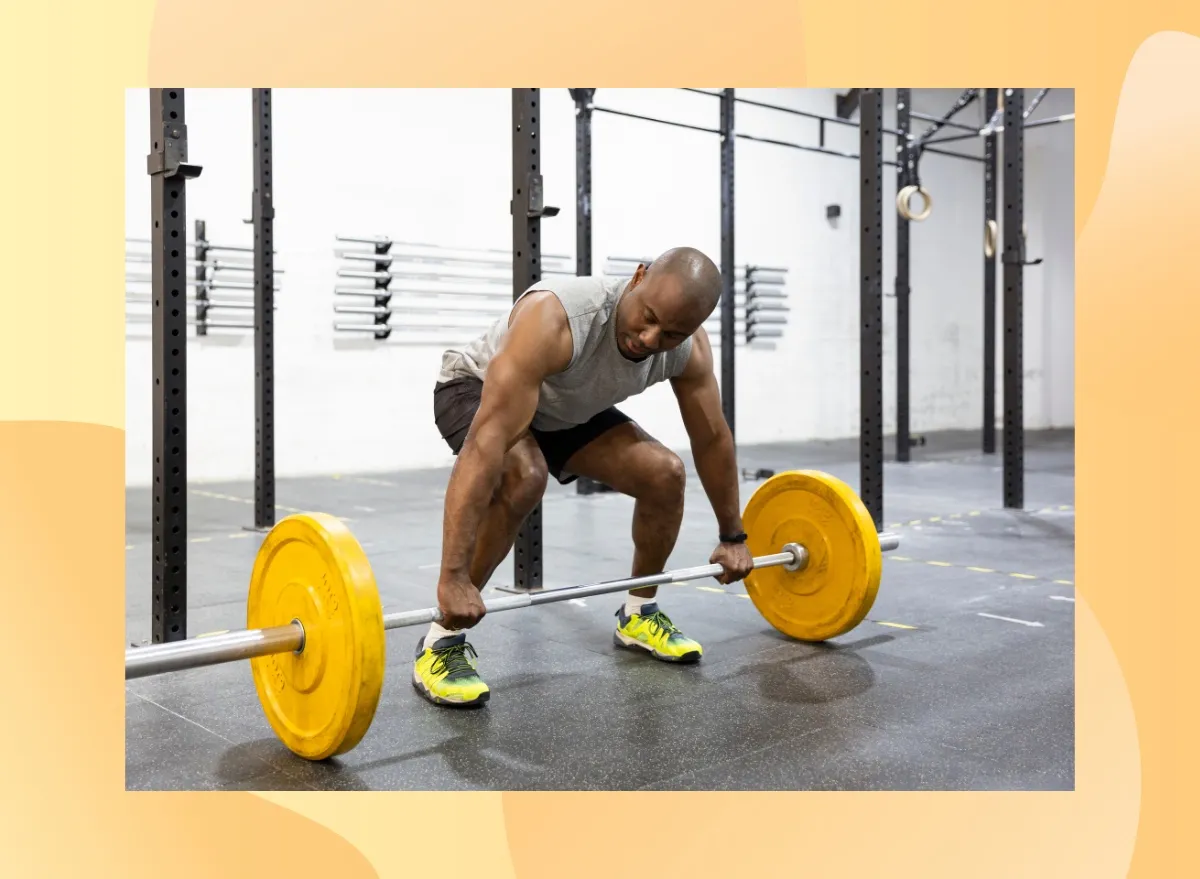
As you age, your metabolism naturally slows down, and maintaining a healthy weight can become harder than ever. Fortunately, there's a simple strength move that can help you rev up your metabolism after 40, and it's one you've probably heard of: the deadlift.
The deadlift is a powerhouse compound exercise that targets multiple muscle groups, including your legs, glutes, back, and core. It's a full-body movement that forces your body to work harder, not just during the exercise but also in the following hours. Matt Dustin, CSCS, a NASM-certified corrective exercise specialist with BarBend, tells ETNT, "Strength training fights age-related muscle loss, and since muscle burns calories faster at rest than fat does, this helps sustain a faster metabolism."
Adding deadlifts to your workout routine can help you build and hold on to muscle mass, improve your posture, and keep your metabolism firing as you get older. But how exactly can you incorporate this game-changing move into your fitness routine to get the most benefit? Read on to find out. (And when you're finished, check out Over 50? If You Can Do These 6 Exercises, You're in Peak Shape for Your Age.)
Why the Deadlift is Essential for Metabolism After 40
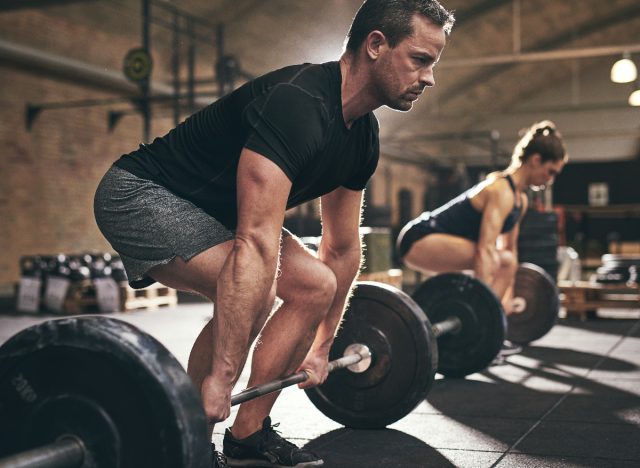
Losing muscle as you age happens to us all. This natural phenomenon is known as sarcopenia and it slows your metabolism because muscle tissue burns more calories at rest compared to fat. That's why incorporating strength training and maintaining muscle mass is crucial for boosting calorie expenditure and keeping your metabolism humming smoothly with each passing year.
"Deadlifts are one of the best exercises to keep metabolism high after 40," Dusin says. "They engage multiple muscle groups and force your body to burn more calories during and after the workout."
How to Perform the Deadlift Correctly
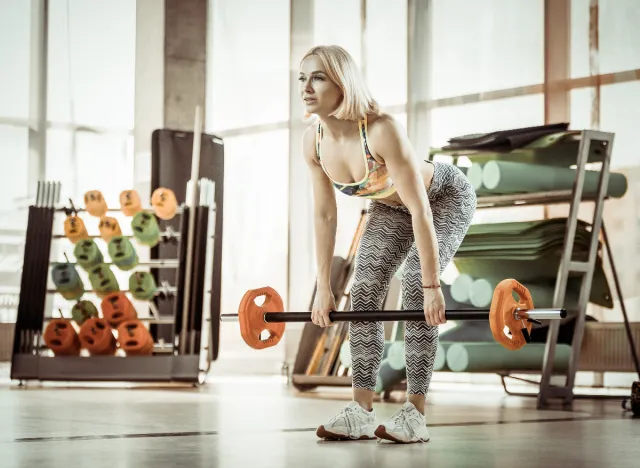
Before you rush off to the gym to start lifting, it's important to first master the proper deadlift form to prevent injury, especially in your lower back. Here, Dustin outlines the six key steps for performing a proper deadlift:
- Plant Your Feet Hip-Width Apart: Your feet should be positioned under the barbell, with your toes pointed slightly outward.
- Grip the Bar Just Outside Your Legs: Hold the bar with both hands, making sure your grip is firm and your arms are straight.
- Brace Your Core: Engage your core to protect your spine throughout the movement. This will also help maintain balance and posture.
- Flat Back and Neutral Spine: Keep your back flat and spine neutral as you lower down to grab the bar. Do not round your back at any point.
- Drive Through Your Hips: Push through your hips and stand up, keeping the bar as close to your body as possible. The movement should come from your hips and legs, not your lower back.
- Return with Control: Lower the bar down with control, hinging at your hips and keeping your back flat.
"Deadlifts are all about form," Dustin explains. "With a braced core and flat back, the hips drive the weight up while keeping the bar close. This technique maximizes the effectiveness of the move and prevents injury."
Additional Benefits of Deadlifts for Metabolism and Posture
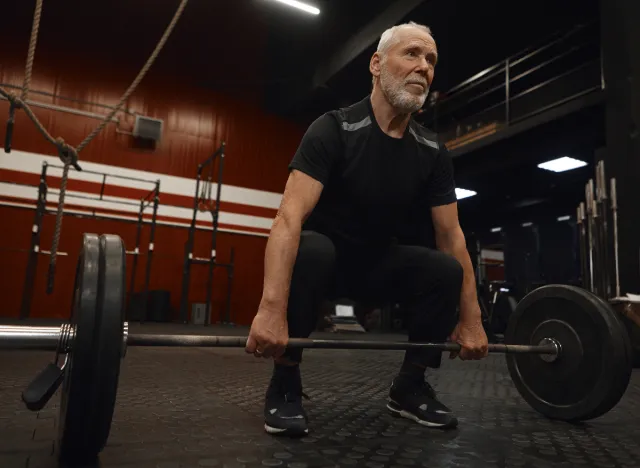
Research shows that making deadlifts a regular part of your strength training program helps strengthen your posterior chain (the muscles along the back of your body), which includes your glutes, hamstrings, and back muscles. These muscles are vital for good posture and daily functional movements.
"Deadlifts help improve posture and functional strength," Dustin explains. "As you build strength in your glutes, hamstrings, and back, you'll notice better posture and more confidence in your everyday movements."
This is particularly important as you age because poor posture can lead to back pain, limited mobility, and an increased fall risk. Deadlifts also help improve balance and coordination, which are essential for overall health and longevity.
How Often Should You Do Deadlifts?
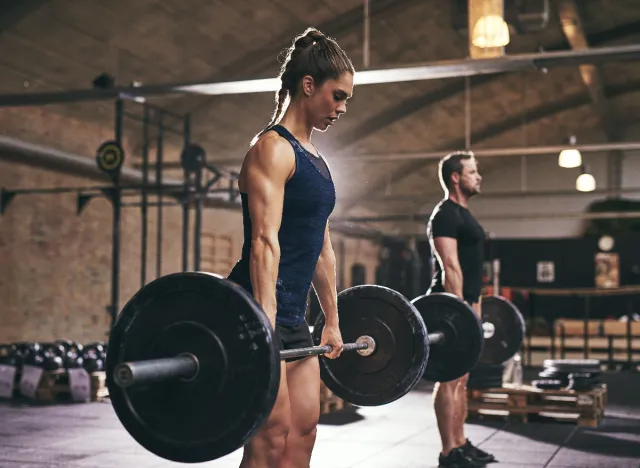
Dustin recommends incorporating them into your workout routine two to three times per week. However, it's crucial to allow for adequate recovery between sessions and not to push yourself too hard. The deadlift is a compound exercise that works several large muscle groups, so recovery is essential to prevent overtraining and injury.
For a balanced routine, try doing deadlifts alongside other strength training exercises and cardio-boosting workouts. Dustin suggests adding deadlifts to a well-rounded fitness plan that includes full-body strength exercises, functional movements, and active recovery days.
"Adding deadlifts to your routine builds strength, preserves muscle, and keeps metabolism efficient well into midlife," Dustin says. "It's a key exercise for anyone looking to stay fit and strong after 40."
Bottom Line
For those aged 40 and beyond, the deadlift is a metabolism-boosting strength exercise that targets multiple muscle groups, helps preserve muscle mass, and improves posture and functional strength. Performing deadlifts regularly can help combat age-related muscle loss, boost your metabolism, and help you maintain a lean, stronger body at any age.
Whether you're new to strength training or a seasoned gym rat, the deadlift is a must-do exercise for maintaining a fast metabolism and optimizing overall health and well-being as you age. However, it's crucial to start slow, focus on form, and gradually increase intensity as you build strength. Your body will thank you for years to come.









